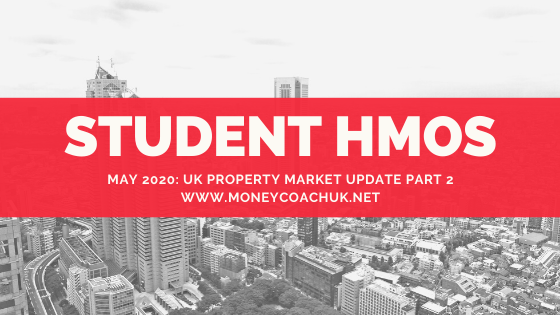The UK property market is a resilient asset category. It has seen numerous shocks over the years but always has been subject to long term capital growth. This is due to a few reasons which tell the UK apart from other jurisdictions; such as the legal framework (which protect your asset), the planning and construction laws (which make increasing supply difficult) and the UK economy and living standards (which keep demand generally high in most areas).
The shocks experienced in the past have been short lived in the south, medium term in the midlands and longer term in the north (where property prices in some areas still have not reached the peak of 2008!). Investors look at a varied strategy across the country to capitalise on this and it is key to building a portfolio which matches your desired outcome. Surprisingly to some, property investment is not just about buying a house and sticking some people inside…
With the above in mind, the current lockdown situation in the UK, alongside the uncertainty around its duration will bring a number of worrying signals for the UK property market. Some which may impact parts of the country in different ways – and for varying amounts of time.
This blog will look firstly at residential property..
Purchasing Demand
Demand for purchasing residential property may still be high among investors – but this is still early in the lockdown with many still closing deals which were agreed before things came to a stop.
Simple things like conducting viewings for purchase have been stopped. So any investor will have to rely on pictures or a video tour – an option many will consider too risky given the hidden challenges or problems which may be omitted. This is more of a logistical issue (which puts off people buying for their own primary residence), but creates a friction in an already cumbersome process – unless you’re an experienced investor in a particular area and have an understanding of the intrinsic value of a property. Other buying methods such as auctions have completely shifted online for investors still keen on purchasing regardless of this hurdle.
Aside from the initial viewing, bidding and agreeing of price – there is the backdrop of the process of purchasing. Valuers are not able to visit properties at the moment, with all mortgage valuations put on hold until further notice. So unless you’re a cash purchaser, you’re unlikely to get anywhere with a purchase in the near future. Bridging, or other short term finance may be an option, but these are only suitable for experienced investors – not the buying public which account for most of the transactions.
For investors further downward pressure on demand is created by mortgage providers tightening up criteria on lending, lowering LTV and increasing rates on some products (despite the backdrop of falling base rates). This all points toward a risk aversion from lenders – lending funds on an asset which they expect to drop in value is a dangerous game, and not a risk they really need to take at the moment. The rumoured shortage of staff to explain this change in lending is a good excuse to maintain confidence in the market, it would seem.
Demand, therefore, will fall the longer the lockdown ensues. If this is 3 months (as suggested by the government) it is inevitable that this will create a downward pressure on prices.
Alongside this people may simply hold-off moving or selling at all – as moving house is probably not even on the agenda when there is warfare in the toilet paper aisle. Supply and demand may fall together…
Supply of Housing Stock
The market is generally kept fluid when the economy is moving well – that is, people are employed, spending money, but also saving. These three things together mean that people are earning money to spend, companies are earning money to pay their employees and those employees can save some money to then think about making larger purchases (such as a new house or investment).
When there is a slowdown in any of these particular areas – such as a large increase in unemployment, or companies going bust due to a decline in people spending money – then the knock on effect is that it is unlikely people will be wanting to move house in the short to medium term. The supply is therefore reduced in the market. This could offset the drop in demand, keeping prices largely consistent.
The question is, will people just hold back selling (and therefore buying) their property due to the current lockdown situation?
What about property currently on the market? Likelihood is that sales will slow and therefore as supply remains the same and demand falls – prices will also fall.
Medium to Long Term Outlook
Two scenarios are in play here – either the current package of stimulus takes the UK across to the end of this or there is more funding required as this drags on further.
In the first scenario, there is likely to be a dip – historically this has been a fall of around 20%, last seen in 2008. Worryingly for some areas, they still hadn’t reached the level of the last crash – the North East region has been very stagnate in terms of capital appreciation (the graph excludes London and wider areas of the UK):

So lenders are right to lower their LTV; charge a higher rate and cut their exposure. But what will happen if this runs longer than 3 months – or more precisely – what else can the government do to boost the economy? Negative interest rates.
There are many different cases of negative interest rates – but the most appropriate one (due to proximity to the UK, independent currency – i.e. it belongs solely to this jurisdiction and of similar stature) is Sweden which had negative rates applied in 2015. This ‘experiment’ ended earlier this year – with many suggesting that whilst it had the desired impact – it just went on for too long.
Looking at the Swedish house price index we can see the impact on prices which jumped 30% in the most affluent areas, and 20% on average:

This is expected as banks have to pay to keep money on deposit – so need to lend it out. So liquidity becomes readily available. A very strange situation, and one which has created a negative interest mortgage in some countries.
Overall, it is likely there will be a dip in the market – the extent of which is likely to be between 10% and 20% based on 2008 – however this is not a fundamental failure of the financial system. I do not expect the current dip in prices to be as large or over as long a period.
How quickly your property recovers depends (historically) on the area of the country. How likely you will find someone who wants to buy your property depends on liquidity in the market and availability of capital. Medium term (2-5 years), this is likely to come back to normal levels – but may be boosted by a negative base rate phenomena – which could (if Sweden’s case rings true in the UK) lead to the largest increase in property values the country may have ever seen.
So what about commercial property? and what can you do to protect against these movements…?
Contains HM Land Registry data © Crown copyright and database right 2020. This data is licensed under the Open Government Licence v3.0.





Recent Comments